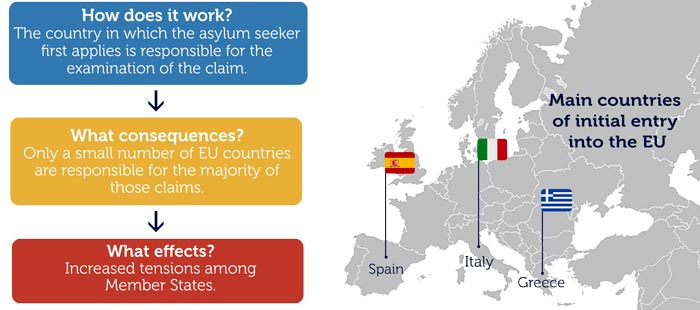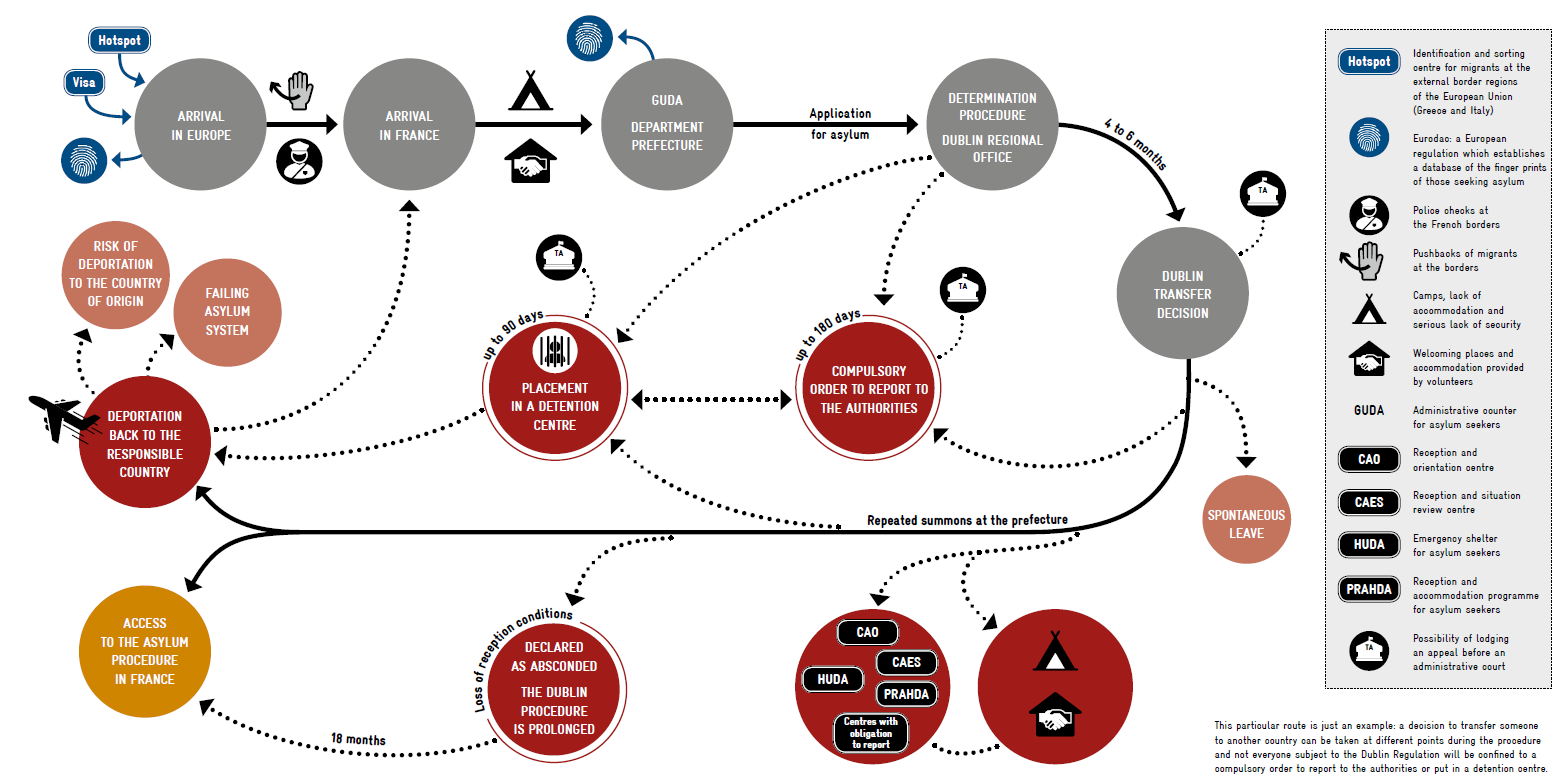Dublin Regulation : What it is
The Dublin Regulation: What It Is Introduction In the world of migration and asylum claims, the Dublin Regulation plays a significant role. This regulation, officially known as Regulation No. 604/2013, is an EU law that determines which member state is responsible for processing an individual's asylum application. In this post, we will delve into the Dublin Regulation, explaining its purpose, impact, and potential future changes. Subheading 1: Understanding the Dublin Regulation The Dublin Regulation was first introduced in 1990 and has seen several amendments since then. Its main objective is to establish a common framework for determining the responsible member state for processing asylum applications, thus avoiding multiple claims in different countries. The regulation is based on the principle that the first member state a person enters should be responsible for examining their asylum application. This is known as the "first country of entry" rule. The regulation takes into account factors such as family ties, previous residence, and humanitarian considerations when determining the responsible country. Subheading 2: The Impact of the Dublin Regulation Since its inception, the Dublin Regulation has had a profound impact on asylum seekers, member states, and the overall European migration system. Here are some key points to consider: 1. Burden-Sharing: The Dublin Regulation aims to distribute the responsibility of processing asylum claims more evenly among member states. However, the regulation has been criticized for placing a disproportionate burden on the countries at the external borders of the EU, such as Italy, Greece, and Spain. 2. Family Reunification: The Dublin Regulation includes a provision allowing for family reunification. This means that if an asylum seeker has family members residing in another member state, they can be transferred to that country to have their application processed together with their relatives. 3. Secondary Movements: One of the challenges posed by the Dublin Regulation is the phenomenon of "secondary movements." This occurs when asylum seekers, after having their application rejected or facing unfavorable conditions in the country responsible for their claim, move to another member state to seek asylum again. This has led to debates on the effectiveness of the regulation. Subheading 3: Proposed Changes and Controversies Over the years, the Dublin Regulation has faced criticism and debates on its effectiveness. The possibilities of abolishing or reforming the regulation have been discussed. Here are some key points regarding proposed changes and controversies: 1. Abolition Proposal: Recently, the European Commission has proposed abolishing the Dublin Regulation and replacing it with a new system, the New Pact on Migration and Asylum. This new system aims to establish a fairer and more predictable approach to asylum in the EU, including a mandatory solidarity mechanism for member states. 2. Controversies: The Dublin Regulation has often faced criticism for its rigid application and shortcomings in protecting asylum seekers' rights. Human rights organizations argue that the regulation puts vulnerable individuals at risk and creates a system of inequity among member states. 3. Reform Efforts: While some advocate for the abolition of the Dublin Regulation, others argue for its reform to address some of the existing challenges. Calls for a more equitable distribution of asylum-seekers, fairer family reunification procedures, and better protection of vulnerable groups have been made. FAQ Section To wrap up this comprehensive post on the Dublin Regulation, let's address some frequently asked questions: Q1: How does the Dublin Regulation determine the responsible member state? A1: The regulation considers factors such as the first country of entry, family ties, and previous residence to determine the member state responsible for processing an asylum claim. Q2: Can an asylum seeker have their application processed in a different member state than their first entry? A2: In some cases, yes. The regulation includes provisions for family reunification and humanitarian considerations, allowing for transfers to another member state. Q3: Why is the Dublin Regulation controversial? A3: The regulation has faced criticism for placing a disproportionate burden on certain member states, creating inequities, and not adequately protecting asylum seekers' rights. Conclusion The Dublin Regulation plays a pivotal role in shaping Europe's asylum system. While it has faced controversies and debates, it remains an important legal framework for determining the responsible member state for processing asylum applications. Whether it evolves through reform or a new system altogether, finding a fair and effective approach to asylum in the EU is crucial in ensuring the protection and well-being of those seeking refuge.  Image Source : alchetron.com
Image Source : alchetron.com  Image Source : openmigration.org
Image Source : openmigration.org  Image Source : www.almrsal.com
Image Source : www.almrsal.com  Image Source : www.tellerreport.com
Image Source : www.tellerreport.com  Image Source : vossmottak.blogspot.com
Image Source : vossmottak.blogspot.com  Image Source : ukandeu.ac.uk
Image Source : ukandeu.ac.uk  Image Source : eudebates.tv
Image Source : eudebates.tv  Image Source : www.lacimade.org
Image Source : www.lacimade.org
Dublin Regulation - Alchetron, The Free Social Encyclopedia
 Image Source : alchetron.com
Image Source : alchetron.com What Is The Dublin Regulation ⁄ Open Migration
Dublin Regulation | المرسال
Commission Wants To "abolish Dublin Regulation" On Asylum Claims
 Image Source : www.tellerreport.com
Image Source : www.tellerreport.com MAP DUBLIN REGULATION ~ VOSS MOTTAK
 Image Source : vossmottak.blogspot.com
Image Source : vossmottak.blogspot.com dublin regulation map version click
The Dublin Regulation: An Overview UK In A Changing Europe
 Image Source : ukandeu.ac.uk
Image Source : ukandeu.ac.uk regulation
Saving The Right To Asylum For Migrants In Europe
 Image Source : eudebates.tv
Image Source : eudebates.tv dublin regulation asylum europe migrants
Dublin Regulation: Into The Infernal Machine Of The European Asylum
 Image Source : www.lacimade.org
Image Source : www.lacimade.org dublin system regulation european asylum infernal machine into decisive demands conclusion report
Commission wants to "abolish dublin regulation" on asylum claims. Dublin regulation. Dublin system regulation european asylum infernal machine into decisive demands conclusion report. Dublin regulation map version click. Map dublin regulation ~ voss mottak